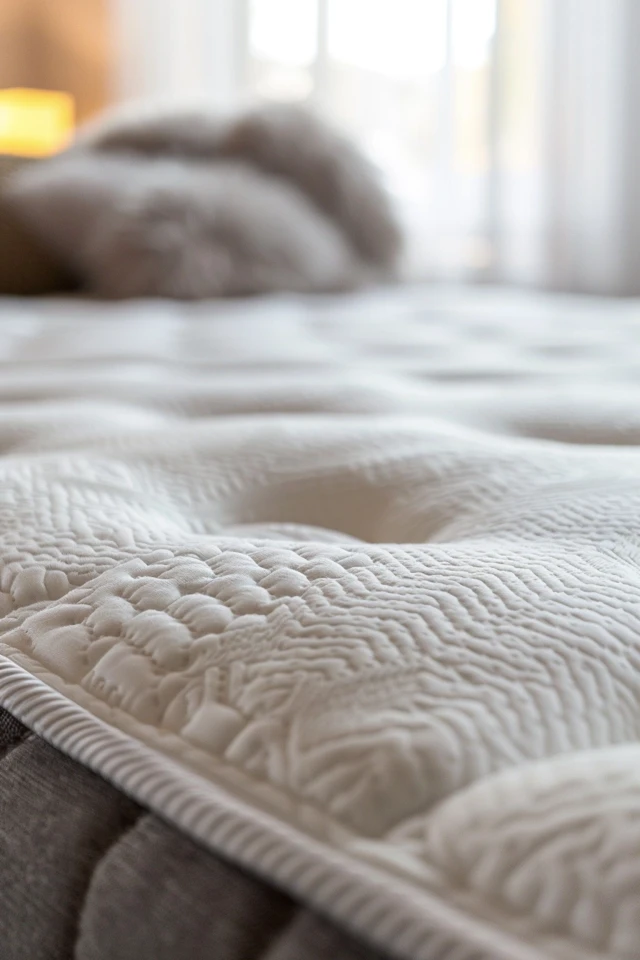Mold can be a common problem for memory foam mattresses, especially in humid environments where moisture can get trapped inside the foam. Mold growth can cause stains and odors, posing a potential health risk. It’s important to prevent and remove mold from your memory foam mattress to ensure a clean and sanitized sleeping surface. In this section, we will explore effective mold removal tips and techniques, as well as preventive measures to keep your mattress mold-free.
Key Takeaways:
- Regularly clean and sanitize your memory foam mattress to prevent mold growth.
- Remove mold from your mattress using natural cleaning solutions, such as vinegar and baking soda.
- Properly ventilate your sleeping area and keep the mattress dry to prevent mold formation.
- Use a mattress protector to create a barrier between your body and the mattress, reducing the chances of mold growth.
- Inspect your mattress regularly for any signs of mold, such as dark spots or musty odors, and take immediate action if you find any.
How to Remove Mold from a Memory Foam Mattress
If you discover mold on your memory foam mattress, immediate action is necessary to prevent further growth and ensure a safe sleeping environment. Mold can cause stains, odors, and potential health risks. Thankfully, there are effective mold removal tips and techniques you can use to tackle this problem head-on.
1. Identify the affected areas
Inspect your memory foam mattress thoroughly to locate any visible signs of mold growth. Look for dark spots, discoloration, or a musty odor. Remember, mold can spread quickly, so it’s important to act promptly.
2. Create a cleaning solution
Prepare a mold cleaning solution by combining equal parts of distilled white vinegar and water. Vinegar is a natural antimicrobial agent that can kill mold and inhibit its growth.

3. Apply the cleaning solution
Using a spray bottle, gently mist the affected areas of the mattress with the cleaning solution. Avoid saturating the foam, as excessive moisture can damage it. Allow the solution to sit for at least 10-15 minutes to penetrate the mold.
4. Scrub and remove the mold
Using a soft-bristled brush or sponge, lightly scrub the affected areas in a circular motion. Be careful not to apply too much pressure, as this could cause the mold to penetrate deeper into the foam. Continue scrubbing until the mold is completely removed.
5. Rinse and dry the mattress
After removing the mold, dampen a clean cloth with fresh water and gently wipe down the treated areas to remove any residual cleaning solution. Once done, allow the mattress to air dry thoroughly in a well-ventilated area. Direct sunlight can help speed up the drying process and further disinfect the mattress.
Remember, mold remediation methods may vary depending on the severity of the mold growth and the specific instructions provided by your mattress manufacturer. If you’re unsure or dealing with extensive mold infestation, it’s wise to seek professional assistance to ensure proper remediation.
By following these mold removal tips and techniques, you can effectively clean your memory foam mattress and create a healthier sleeping environment for yourself and your loved ones.

Mold Prevention Techniques for Memory Foam Mattresses
When it comes to keeping our memory foam mattresses clean and mold-free, prevention is the best approach. By implementing a few simple techniques, you can safeguard your mattress and ensure a healthy sleeping environment. Here are some effective mold prevention techniques:
1. Keep your mattress dry: Moisture is the perfect breeding ground for mold. To prevent mold growth, make sure your memory foam mattress stays dry. Avoid spilling liquids on the mattress, and if any accidents do happen, clean and dry the affected area immediately. It’s also a good idea to use a mattress protector that is waterproof yet breathable, allowing for proper air circulation.
2. Maintain proper ventilation: Good air circulation is crucial in preventing mold. Ensure your bedroom is well-ventilated by opening windows or using a fan to promote airflow. This will help prevent any moisture from getting trapped in the mattress and reduce the chances of mold growth.

3. Regular cleaning and sanitization: Cleaning your memory foam mattress regularly is essential to prevent mold and maintain its longevity. Vacuum the mattress regularly to remove any dust, dirt, or debris that may accumulate. You can also use a mild detergent mixed with water to spot clean any stains. Additionally, consider using a disinfectant spray or a sanitizing solution specifically designed for mattresses to eliminate any bacteria or fungi that may be present.
4. Allow sunlight exposure: Sunlight is a natural mold inhibitor. Whenever possible, expose your memory foam mattress to sunlight. Open the curtains or blinds and let the sun’s rays penetrate the mattress. Sunlight not only helps to kill mold spores but also aids in removing any musty odors that may have developed.
By following these mold prevention techniques, you can ensure that your memory foam mattress remains clean, fresh, and free from mold. Regular maintenance and attention to detail will go a long way in extending the lifespan of your mattress and providing you with a healthy and comfortable sleep environment.

